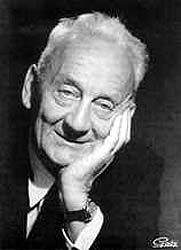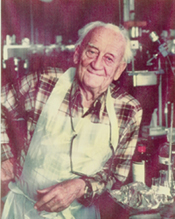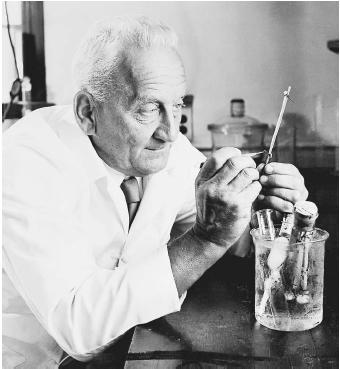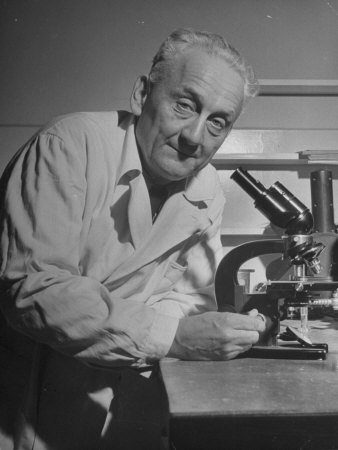
| Name: | Albert von Szent-Györgyi |
| Birth Date: | September 16, 1893 |
| Death Date: | October 22, 1986 |
| Place of Birth: | Budapest, Hungary |
| Place of Death: | Woods Hole, Massachusetts, United States |
| Nationality: | American |
| Gender: | Male |
| Occupations: | biologist, chemist |




In 1893, Albert Szent-Györgyi was born in Budapest, Hungary, into a family of noted scientists. During World War I, he spent several years in the Austrian army but, although decorated for bravery, became increasingly convinced the war was a senseless one. Deliberately wounding himself, he returned to his studies and obtained his medical degree from the University of Budapest in 1917. A year later--in large part because the Austrian defeat left his family financially strained--Szent-Györgyi decided to seek further training in other countries. Restless and intellectually curious, he worked and studied in Berlin, Germany, the Netherlands and at the Mayo Clinic in the United States. Finally, in 1927, he obtained his Ph.D. at England's Cambridge University.
At Cambridge, Szent-Györgyi worked in Frederick Gowland Hopkins' laboratory and, for a time, concentrated on trying to determine the function of the body's adrenal gland. During that period, in an odd roundabout way, the restless scientist suddenly found himself taking up a new interest: fruits and vegetables. He had already noticed that when someone acquires Addison's disease, which causes the adrenal gland to wither, brownish spots typically appear on the patient's skin. These spots, he felt, were surprisingly similar to the brown spots that appear on plants damaged by oxidation. Intrigued, he asked himself: could oxidation affect the tissue of humans in the same way it affected that of plants"To answer his own question, Szent-Györgyi first studied plants, like potatoes, that invariably turn brown when exposed to too much oxygen. Then he turned his attention to plants that did not turn brown in similar situations, suspecting that they might possess some kind of antioxidizing substance. Sure enough, Szent-Györgyi not only found such a substance in both oranges and cabbages, but he also found an identical substance in adrenal glands. Because the substance's molecule seemed to possess six carbon atoms, he named it hexuronic acid.
For several years, while working on other projects, Szent-Györgyi continued to investigate his newly discovered substance, (even sending a portion of it to his friend and fellow chemist Walter Norman Haworth (1883-1950), who was eventually to identify vitamin C's chemical structure). But not until 1931--when he had returned to Hungary and joined the faculty of the University of Szeged--could he devote his full attention to it. That year, working with a young American associate, S.L. Svirbely, he discovered that the substance had considerable antiscorbutic effect--it could, in other words, both prevent and counteract scurvy. For further research, though, he needed enormous amounts of the hexuronic acid, and he could no longer afford the sources he had been using. Almost in desperation, he turned to one of Hungary's best-known exports, the paprika, a fruit in the red pepper family. And to his intense relief, paprika proved to be an exceedingly rich source of the acid. With ample supplies at his disposal, Szent-Györgyi was able to prove that, as he had long suspected, hexuronic acid was really vitamin C. (He published his findings in 1932, just two weeks after an American team of researchers, headed by Charles G. King, made a similar announcement.) Szent-Györgyi and Haworth, decided to rename the acid, which from then on was called ascorbic acid.
For a few more years, Szent-Györgyi continued to study the activity of ascorbic acid in the body. His researches eventually led him to the isolation of a new catalyst that he called cytoflave and which was later identified as vitamin B2 or riboflavin. He also began an intense investigation into the oxygen uptake of minced muscle tissue, his work laying the foundation for the elucidation of the citric acid cycle by Hans Krebs.
For his various research projects, particularly those relating to vitamin C, Szent-Györgyi received the Nobel Prize in physiology or medicine in 1937. Later, the scientist switched his studies to the biochemical processes involved in muscle contractions. Active in the anti-Nazi underground during World War II, he was ordered killed by Adolf Hitler (1889-1945) himself, but was saved by friends who brought him to the Swedish Embassy (neutral territory in those days). He remained there until the danger passed. In 1947, he decided to immigrate to the United States and was immediately offered a position at the Marine Biological Laboratories at Woods Hole, Massachusetts.



